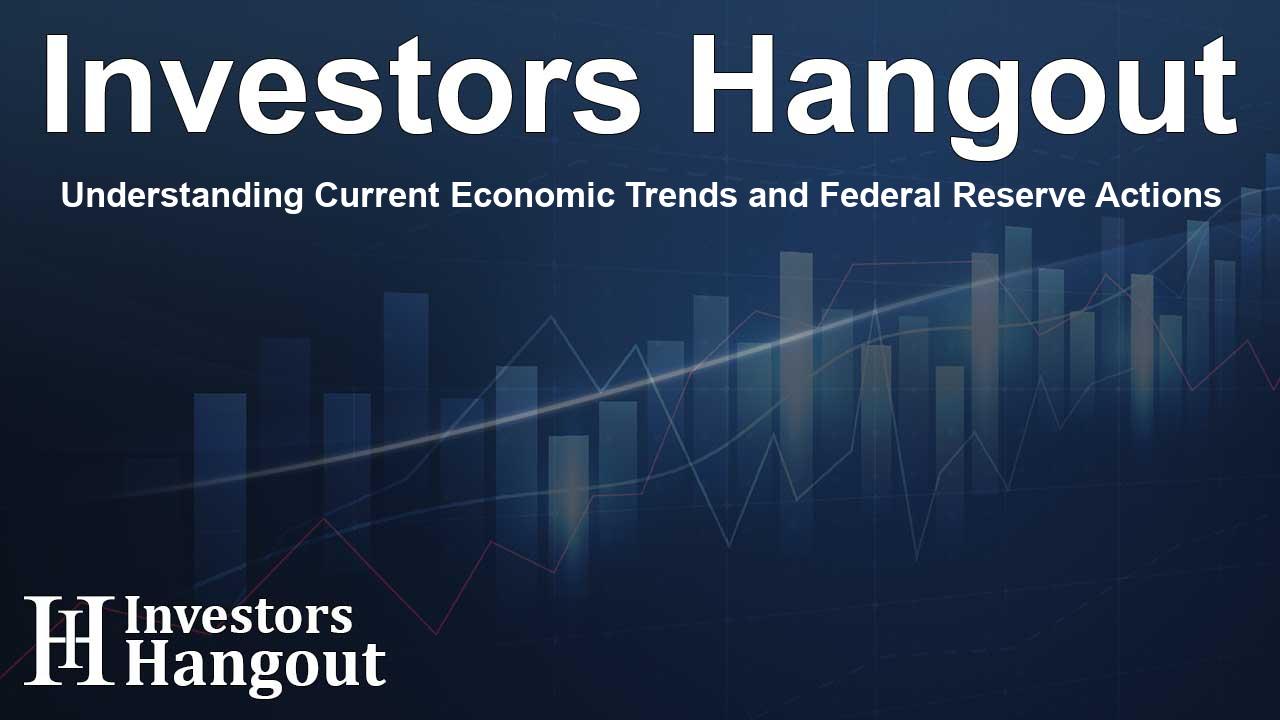Understanding Current Economic Trends and Federal Reserve Actions

Understanding Changes in Inflation and Economic Signals
Recently, consumer prices in the United States have experienced a slight uptick. Newly released data reveals a modest rise in the consumer price index (CPI) for August. Although this slowing inflation signals a more stable economic environment, the Federal Reserve remains cautious about taking bold steps, such as making a significant interest rate cut.
The CPI increased by 0.2% last month, mirroring a similar rise in July. Over the course of a year, the CPI has gone up by 2.5%, marking the smallest annual increase since early 2021. This trend towards moderating prices is noteworthy and deserves attention.
Market Reactions and Economic Expectations
In reaction to this data, we saw a slight downward movement in the stock market. U.S. stock index futures dipped by 0.35%, hinting that Wall Street may open on a weaker note. Bond yields also shifted, with the 10-year Treasury yield rising to 3.676% and the two-year bond yield reaching 3.677%. Meanwhile, the foreign exchange market showed a slight strengthening of the dollar, while the euro experienced a small decline.
Insights from Economists on Current Trends
Several economists have shared their perspectives on the current economic situation. Brian Jacobsen, Chief Economist at Annex Wealth Management, noted that the latest core inflation figures might cause the Fed to refrain from implementing a larger 50 basis points interest rate reduction. He sees the Fed adopting a more measured approach, potentially starting with a smaller cut and adjusting based on future economic readings. Jacobsen emphasized that the way the Fed communicates its decisions is just as vital as the decisions themselves.
Fed’s Shift in Focus to Employment and Inflation
Ben Vaske, Senior Investment Strategist at Orion, pointed out that the Fed is shifting its focus. He believes that current economic conditions should lead the Fed to prioritize employment statistics over inflation rates. Vaske expects a 25-basis point cut to interest rates in the approaching week, reflecting concerns about job stability even amid inflationary pressures.
The Federal Reserve's Expected Direction
The Federal Reserve is anticipated to move ahead with a smaller interest rate cut next week. Jason Pride, Chief Investment Officer at Glenmede, suggests that while there is some moderation in inflationary pressures, the core CPI numbers reflect various conditions that influence short-term expectations. Market participants now face the challenge of navigating lower rates while grappling with the perception of a possibly softening economy.
Michael Lorizio, a Senior Fixed Income Trader at Manulife Investment Management, commented on the reevaluation of market expectations for rate cuts. He sees a more conservative approach ahead as the Fed responds to forthcoming monetary policies. Lorizio observed that indications suggest a 25-basis point cut may be appropriate in the near future.
Inflation Patterns and Future Objectives
Mona Mahajan, Senior Investment Strategist at Edward Jones, highlighted that the current inflation data aligns well with the Fed's goals, as the headline CPI inches closer to the 2% target. She explained that while the Fed is likely poised to begin a rate-cutting cycle, moderating inflation could provide a favorable backdrop for economic conditions moving forward.
Conclusion: Looking Ahead
To sum it up, the Federal Reserve will have to consider multiple economic indicators as it prepares for its next steps regarding interest rates. The absence of surprises in inflation figures has resulted in a cautious approach to policy adjustments. Experts suggest a larger cut isn't likely in the immediate term, but paying close attention to employment data and overall economic health will be crucial in shaping the Fed's long-term strategies.
Frequently Asked Questions
What does the recent CPI report indicate?
The recent CPI report reveals a 0.2% rise in consumer prices, signaling a trend toward moderating inflation over the past year.
Are we expecting any interest rate cuts from the Fed?
Yes, the Federal Reserve is widely anticipated to implement a rate cut, likely starting with a 25 basis point reduction based on the current economic conditions.
How has the stock market reacted to the CPI news?
Following the CPI announcement, stock index futures indicated a slight decline, reflecting investor concerns regarding economic growth prospects.
Why is employment data becoming more significant for the Fed?
The emphasis on employment data is essential because upcoming labor market conditions will greatly influence the Fed's monetary strategies amid potential economic slowdowns.
What are the implications of inflation moving closer to the Fed’s target?
As inflation approaches the Fed's 2% target, it may create a more stable environment for upcoming interest rate adjustments, suggesting improved economic conditions ahead.
About The Author
Contact Caleb Price privately here. Or send an email with ATTN: Caleb Price as the subject to contact@investorshangout.com.
About Investors Hangout
Investors Hangout is a leading online stock forum for financial discussion and learning, offering a wide range of free tools and resources. It draws in traders of all levels, who exchange market knowledge, investigate trading tactics, and keep an eye on industry developments in real time. Featuring financial articles, stock message boards, quotes, charts, company profiles, and live news updates. Through cooperative learning and a wealth of informational resources, it helps users from novices creating their first portfolios to experts honing their techniques. Join Investors Hangout today: https://investorshangout.com/
The content of this article is based on factual, publicly available information and does not represent legal, financial, or investment advice. Investors Hangout does not offer financial advice, and the author is not a licensed financial advisor. Consult a qualified advisor before making any financial or investment decisions based on this article. This article should not be considered advice to purchase, sell, or hold any securities or other investments. If any of the material provided here is inaccurate, please contact us for corrections.
